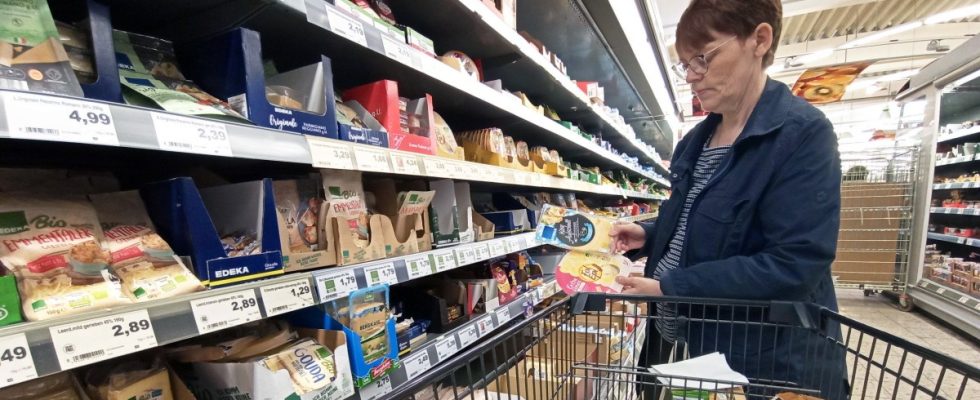Customers in the supermarket were already familiar with shrinkflation: shrunken, smaller packaging with less content at the same or even higher price. But that’s just one way food manufacturers raise prices. The Hamburg consumer advice center has now identified another trick: manufacturers and retailers maintain the quantity, but quietly change the recipes of individual foods. They mix cheaper and often poorer quality ingredients into them. If the price of the product remains the same, you can save a lot of money.
This phenomenon is called skimpflation. Skimp is English and means something like “to skimp” or “to save” on quality. Consumer advocate Armin Valet gives some concrete examples of this, which are also on the Consumer advice website are listed. The manufacturer Arla reduced the proportion of butter and rapeseed oil in its Kærgården mixed spread and replaced it with more water. The spreadable fat “Streichzart” from Upfield even contains almost 80 percent waterbut based on the fat content, it is more expensive than butter.
Valet considers Aldi Nord’s actions to be particularly bold. The discounter mixes its own-brand Amandas chocolate with its own production Moser Roth less marzipan at. The proportion has shrunk from 45 to 38 percent. The discounter, like the other companies, rejects the allegations. It is said that the quality has not decreased. However, consumer advocates noticed something else: the words “100% Arabica” disappeared on the coffee packaging for Aldi’s own brand Markus Kaffee Gold. Valet suspects that Arabica may have been replaced by the cheaper Robusta coffee bean variety.
It is difficult for consumers to notice when recipes are deteriorating
Penny’s creamed spinach contains significantly less spinach, but more water and a little more cream. However, spinach is the most expensive ingredient here. Adelholzener slightly reduced the apple juice content in his spritzer. And Edeka completely replaced the whipped cream with coconut oil in its own brand Gut & Günstig vanilla ice cream. Since then, the ice cream has only been called “ice cream” and no longer “ice cream” because the term is protected. Nestlé, in turn, continues to use palm oil instead of sunflower oil in its Cini Minis breakfast cereals. The latter is again available on the world market in sufficient quantities at prices similar to those before the war in Ukraine. To the detriment of the children for whom the breakfast cereal is made. Because sunflower oil has more health-promoting unsaturated fatty acids. The list could be extended.
Consumer advocates complain that it is difficult for consumers to recognize when recipes have deteriorated. To do this, they would have to compare the small print of the ingredients list on an old packaging with that on a new one. Hardly feasible. In some cases, information on the packaging such as “new formula” or “improved formula” is an indication of skimpflation. However, the manufacturers are often at a loss for excuses. Mostly they referred to responding to the “wishes” of consumers.
The options for combating skimpflation are limited
According to the dpa news agency, the consumer organization Foodwatch demands that manufacturers and retailers provide transparent information about recipe changes. If they use inferior ingredients, they should also lower the price. It cannot be the case that consumers pay more for poorer quality and companies earn additional money.
However, the options for taking action against this are limited. Manufacturers would have to adapt the ingredient lists when recipes were changed, but would not have to specifically state what had been changed. In some cases the product name has to be changed. Margarine, for example, is then called “spreadable fat” because it no longer contains enough fat. But the manufacturers would have already met the requirements. Because they are not obliged to mark recipe changes, there are probably more of them than are known, Valet suspects.
Even food inspectors don’t offer much hope for improvement. “We can only take action if violations caused by misleading and deception are obviously suspected,” the dpa quoted Maik Maschke, chairman of the Federal Association of Food Inspectors in Germany. Often you only find out from third parties when consumers are upset. In addition, food monitoring is never about prices, but always about correct labeling and correct quantities. In addition, it is “not uncommon for food manufacturers to change the recipe,” says Maschke. The changes could also be due to cut supply chains and scarce food, for example because of the war in Ukraine or the corona pandemic. The question is whether ingredients such as apple juice and cream were also affected.

